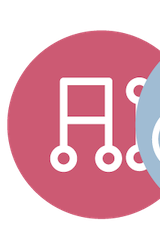Microsoft has unveiled a groundbreaking innovation in cybersecurity with their introduction of human-in-the-loop AI agents, designed to transcend traditional hardcoded security practices. These AI systems feature advanced capabilities to analyze and respond to security threats dynamically, incorporating human oversight for heightened accuracy and adaptability. For additional insights into Security Field Day 13, explore Jack Poller’s comprehensive analysis on LinkedIn Pulse.
Uncompromising Network Visibility: How cPacket Augments Security with Advanced Telemetry and AI
Jack Poller recently dissected how cPacket Networks is enhancing security in today’s enterprises by integrating advanced telemetry and AI into their network solutions. His analysis illustrates how cPacket’s sophisticated tools provide an unrivaled clarity and insight, allowing for proactive threat detection and management. For additional discussions and insights from Security Field Day 13, follow Jack Poller’s coverage on LinkedIn Pulse.
Breaking the AI Storage Bottleneck: Solidigm’s Strategic Approach to Each Pipeline Stage
Jack Poller provides an insightful analysis into how Solidigm is addressing the AI storage bottleneck by strategically catering to each stage of the data pipeline. He explores the technological advancements and solutions implemented by Solidigm that enhance both the efficiency and effectiveness of AI data processing. For more in-depth analysis on AI Infrastructure Field Day 2 by Jack Poller, visit Techstrong AI.
Feeding the Beast: How Keysight Ensures AI Networks Can Handle Data-Hungry GPUs
Jack Poller discusses how Keysight Technologies effectively addresses the challenges of maintaining robust networks that feed data to power-hungry GPUs, which are crucial for AI development. He explores Keysight’s innovative solutions that optimize network performance and reliability to meet the demands of intensive AI workloads. Discover more insights on AI Infrastructure Field Day 2 from Jack Poller at Techstrong AI.
Orchestrating the Future of AI Networking with Software-Defined Solutions from Aviz
Jack Poller recently highlighted the advancements in AI networking facilitated by Aviz’s software-defined solutions, pointing out their potential to revolutionize AI infrastructure management. He detailed how these solutions offer enhanced scalability, efficiency, and automation, setting a new benchmark in network orchestration. Explore additional insights from AI Infrastructure Field Day 2 in articles on Techstrong AI by Jack Poller.
Scaling AI: Mastering Inference with Google Cloud’s GKE Inference Gateway
Jack Poller provides an insightful analysis of how Google Cloud’s GKE Inference Gateway is pivotal in optimizing the scaling of AI through efficient model inference. His coverage highlights the integration capabilities of GKE, demonstrating its effectiveness in managing diverse AI application demands. For more in-depth insights, explore additional coverage of AI Infrastructure Field Day 2 by Jack Poller.
Compliance Does Not Equal Security
Compliance reinforces the state of security in your organization. However, compliance in and of itself is not security. In this episode of the Tech Field Day Podcast, Tom Hollingsworth is joined by Jack Poller and Milou Meier as they discuss the nuance between securing your organization and ensuring compliance. They discuss the challenges with audits and the “checkbox” mentality that has become common. They also discuss how organizations face different challenges globally and how you can help ensure that you aren’t being exposed to problems in the future.
Bringing Intent-Based Management to Open Networking for AI
Jack Poller explores the integration of intent-based management within open networking frameworks in the context of AI advancements. This approach emphasizes smart network management strategies that adapt to AI-specific requirements, thereby enhancing operational efficiency and reducing complexity in AI network infrastructures. For additional insights on AI Infrastructure Field Day 2, follow Jack Poller’s coverage on LinkedIn Pulse.
The AI Data Center Evolution: Juniper Apstra’s Lifecycle Solution for Performance at Scale
Jack Poller recently explored Juniper Apstra’s lifecycle solution for AI data centers, highlighting its capacity to manage performance at scale. He discussed the evolution of AI data centers through the lens of Juniper’s advanced tools, which are crucial for optimizing and automating data center operations as they increase in complexity and scale. For more insights on AI Infrastructure Field Day 2, you can read additional coverage by Jack Poller on LinkedIn Pulse.
From Data Centers to the Edge: HPE ProLiant’s Security Revolution for the AI Age
Jack Poller’s latest LinkedIn Pulse article discusses the significant advancements in security within HPE ProLiant servers, a critical development as operations move from data centers to edge locations in our AI-driven era. He details how the enhanced security features are designed to meet the increasing demands for reliable and robust protection against sophisticated cyber threats in edge computing environments. This LinkedIn Pulse article follow’s Jack’s participation in our special Tech Field Day event with HPE.
Servers Are Still Relevant in the Age of Cloud with HPE
Although we live in a world of software, server hardware still matters from datacenter to cloud to edge. This episode of the Tech Field Day Podcast features Scott Shaffer, VP and Chief Technologist at HPE, discussing the evolution of the server with Jack Poller, Vuong Pham, and Stephen Foskett. Although servers might appear to be commoditized, companies like HPE are building optimized designs for various purposes. Edge servers, for example, are a unique form factor and have special requirements for mounting, air filtering, security, power efficiency, management, and more. Datacenter and cloud servers have special optimizations as well, with efficiency, expansion, and cooling in special focus. As we turn to AI and HPC, servers have to support unprecedented levels of electrical power and cooling, with air cooling still very much in demand but incredible advances being made on liquid cooling as well. The Tech Field Day delegates will be on-site with HPE on the same day this episode airs, learning more about the ProLiant line. Tune in and watch the Tech Field Day presentations on YouTube.
AI Innovation Inevitably Drives Massive Energy Consumption
The increasing reliance on technology has led to a surge in energy consumption, raising concerns about sustainability. In this episode of the Tech Field Day Podcast, recorded live at AI Field Day in San Jose, California, Jim Czuprynski, Jack Poller, Andy Banta, and Stephen Foskett discuss the challenges of powering data centers and the environmental impact of AI and modern computing. They explore potential solutions, including nuclear power, solar energy, and small modular reactors, while also addressing the issue of heat dissipation from high-density computing. The conversation highlights the need for innovation in energy efficiency, with advancements in semiconductor technology and battery storage playing a crucial role. While concerns about power availability persist, the panel remains optimistic that technological progress and cross-industry collaboration will drive sustainable solutions for the future.
Why Is AI Inferencing the Next Battleground for Enterprise Tech?
Following Kamiwaza’s presentation at AI Field Day, Jack Poller explored the significance of AI inferencing in enhancing enterprise technology, identifying it as a crucial competitive frontier. His analysis covers the accelerative technologies and innovative strategies that are transforming AI’s application in the business landscape. For further insights on AI Field Day 6, follow Jack Poller’s posts on LinkedIn Pulse.
Unlocking GPU Potential: How MemVerge Solves Enterprise AI Infrastructure Challenges
Jack Poller recently covered how MemVerge addresses significant hurdles in enterprise AI infrastructure by optimizing GPU performance, crucial for handling extensive workloads and AI applications. He highlights MemVerge’s innovative approach in enabling more efficient memory management, which in turn, enhances computing processes and speeds up AI project delivery times. For additional insights on AI Field Day 6, follow Jack Poller’s updates on LinkedIn Pulse.
Measuring Success in the AI Revolution: The Critical Role of MLCommons
Jack Poller’s insightful analysis on LinkedIn focuses on the pivotal role of MLCommons in benchmarking tools and datasets during the surge of AI technologies. In his article, Poller explores how MLCommons is setting the standards for machine learning performance, thereby shaping the future of AI development and implementation across various industries. For further insights on AI Field Day 6 from Jack Poller, explore his coverage on LinkedIn Pulse.
Career Advice from a Long-Time Practitioner of Tech
Jack Poller, a seasoned technology professional, shared his career advice for those in the tech industry, focusing on long-term growth and sustainable practices. His insights are built from years of direct experience and aim to guide tech workers at all stages of their careers. In this Gestalt IT article, Sulagna Saha shares Jack’s insights.
Revolutionizing Edge Computing: How Zededa Brings Cloud Agility to the Edge
Jack Poller provides insights into how Zededa is transforming edge computing by integrating cloud-like agility directly at the edge, enhancing both the flexibility and scalability of deployments. He examines the implications of this approach for traditional cloud services and discusses how it can lead to more robust, efficient, and scalable edge solutions. For extended coverage of Edge Field Day 3, check out Jack Poller’s LinkedIn Pulse articles.
Can You Run Virtualized Infrastructure at the Edge?
Jack Poller explores the feasibility and implications of deploying virtualized infrastructure with VMware at the edge, discussing the technological advancements and potential challenges that come with edge computing. He breaks down key considerations, including connectivity, resource management, and security, poised to influence enterprise decisions around locating computing resources closer to data sources. For additional insights on Edge Field Day 3, explore Jack Poller’s comprehensive analysis on LinkedIn Pulse.
Do You Need Specialized Hardware at the Edge?
In this article, inspired by the OnLogic presentation at Edge Field Day 3, Jack Poller focuses on whether specialized hardware is necessary for processing at the edge, considering factors like environmental conditions and computing needs. Poller explores the trade-offs between deploying general-purpose versus specialized hardware in edge computing, highlighting how decision-makers can optimize their infrastructure for performance and cost-effectiveness. For additional insights from Tech Field Day events, check out the other articles by Jack Poller on LinkedIn Pulse.
Can We Find Data Storage to Match Your Data Growth?
Jack Poller recently discussed the challenges of keeping up with rapid data growth and finding suitable data storage solutions that can scale effectively to meet evolving demands. In his analysis, he explores various innovative storage technologies and strategies that enterprises can consider to address their increasing data needs. For more insights from Jack Poller on this topic, check out his coverage of Cloud Field Day 21 on LinkedIn Pulse.








